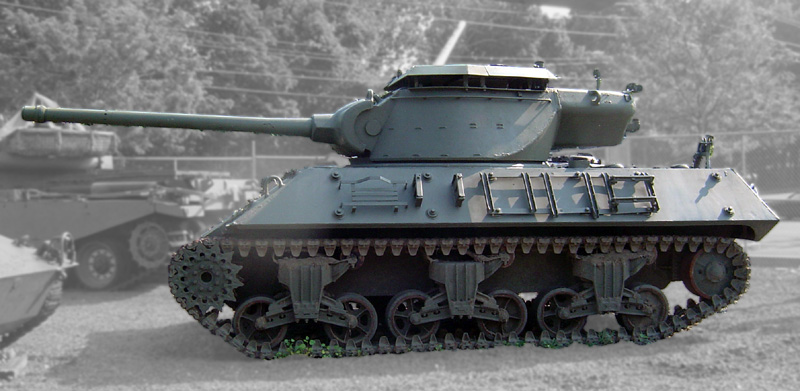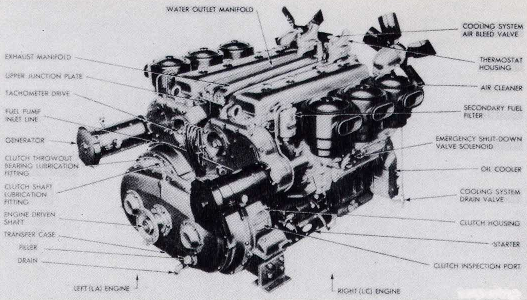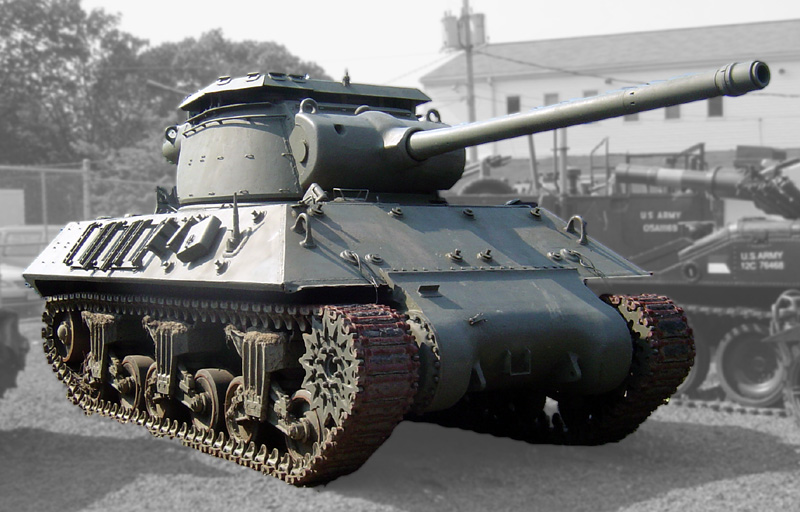The ultimate American Tank Hunter of ww2
The M36 Jackson was the last dedicated American tank hunter of the war. After the early, soon obsolete M10 Wolverine and superfast M18 Hellcat the US Army needed a more powerful gun and better armoured vehicle to hunt down the latest developments in German tanks, including the Panther and Tigers. Indeed, in September 1942 it was already foreseen that the standard 75 mm 3in M7 gun of the M10 was only efficient at short range (500 m), and engineers were tasked to search for a new 90 mm gun, which became the M3 gun, also studied for the future M26 Pershing to engage German tanks on equal terms considering range.
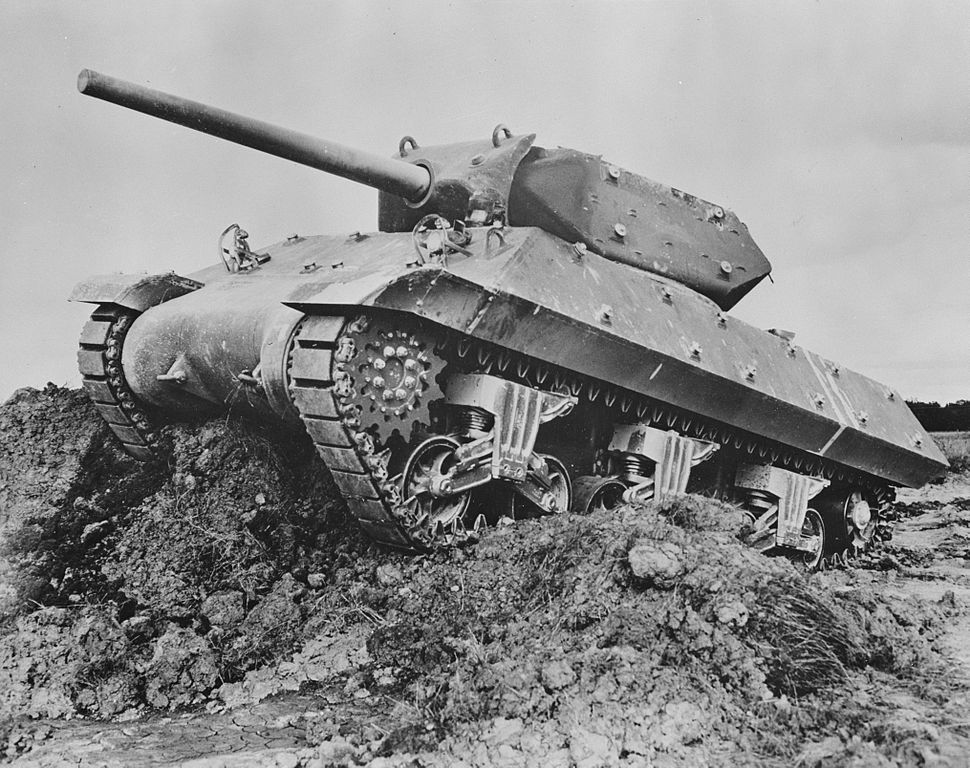
M10A1 GMC in trials, 1943. The T71 was developed on this hull and chassis.
This prospects were confirmed at a high cost in Kasserine pass already and later in multiple engagements in Sicily and Italy (although many half-track TDs were also the norm like the M3/M9 GMC). The new tank equipped with this gun was designed quickly on the basis of the M10 tank destroyer. At first the T53 sought a dual AA/AT rôle, but was eventually cancelled. In fact the T71, M36 prototype was completed in March 1943. However due to multiple issues, the production only started mid-1944 and the first deliveries came in September 1944, two years after the idea was first proposed. This new tank hunter was known by the soldiers as “Jackson” in reference to the Confederate general of the civil war Stonewall Jackson, or “Slugger” but only officially named “M36 tank destroyer” or “90 mm Gun Motor Carriage M36” by the ordnance and US Army at large. It proved itself vastly superior to the M10, and was the arguably the finest American tank hunter of world war two, with also a long postwar career.
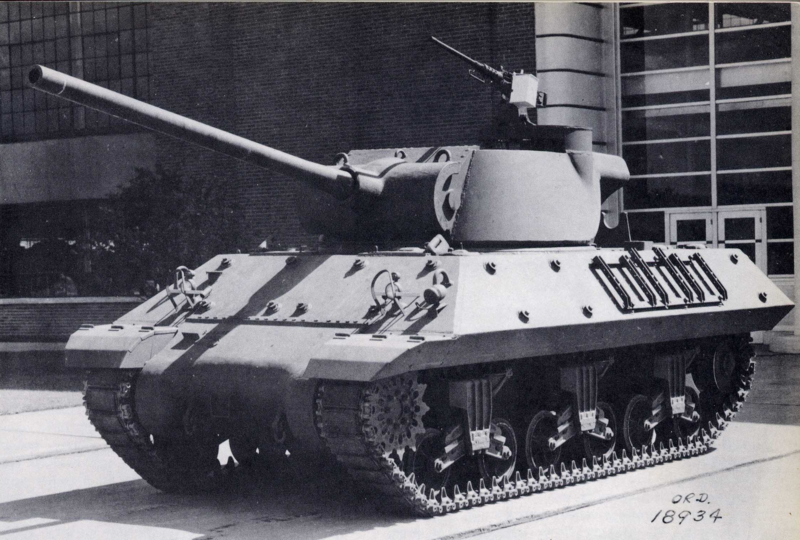
T71 GMC pilot prototype in 1943
Development (1943-44)
The first M36 prototype was completed in March 1943. It was characterized by a new turret mounting the 90 mm M3 gun on a standard M10 chassis. The prototype designated T71 Gun Motor Carriage passed all tests with success, proving lighter and thus more agile than the regular Sherman M4A3 and order for 500 was issued. Upon standardization the designation was changed to “90 mm Gun Motor Carriage M36” in June 1944. These were produced by the Fisher Tank Division (General Motors), Massey Harris Co., American Locomotive Co. and Montreal Locomotive Works (chassis) and hulls by the Grand Blanc Arsenal. The M36 was based on the upgraded M10A1 Wolverine hull, whereas the B2 was based on the regular M10 chassis/M4A3 diesel.
Design
Like all US tank destroyers, the turret was open-topped to save weight and provide better peripheral observation. However of the turret design was not a simple repeat of the sloped plates of the M10 but rather a thick casting with front and side slopes and a backwards recline. A bustle acting as turret basket was welded on this casting to the rear, providing extra ammo storage (11 rounds) as well as acting as a counterweight for the M3 main gun (47 rounds, HE and AP). The main secondary armament, the usual dual purpose “Ma Deuce” Cal.50 (12,7 mm) Browning M2 heavy machine gun was installed on a pintle mount on this bustle, but there was no coaxial MG although the B1 introduced a secondary Browning M1919 cal.30 in the hull. Postwar modifications included a folding armored roof kit to provide some protection against shrapnel, but also later fitting of a hull ball mount Browning cal.30 machine gun on the co-driver’s position and the new M3A1 gun.
The chassis was basically the same as the M10, with a Ford GAA V-8 gasoline 450 hp (336 kW) which gave a 15.5 hp/ton ratio, coupled with a Synchromesh gearbox with 5 forward and 1 reverse ratio. With 192 gallons of gasoline this gave a 240 km (150 mi) on roads with a top speed on flat up to 48 km/h (30 mph). The running gear comprised three bogies with Vertical Volute Spring Suspension (VVSS), 12 rubberized roadwheels, with front idlers and rear drive sprockets. Hull protection counted on 13 mm thick add-on bolted armoured panels like the M10 and ranged from 9 mm (035 in) to 108 mm (4.25 in) on the gun mantlet and front hull glacis plate. In detail these figures were:
Glacis front hull 38–108 mm / 0–56 °
Side (hull) 19–25 mm / 0–38 °
Rear (hull) 19–25 mm / 0–38 °
Top (hull) 10–19 mm / 90 °
Bottom (hull) 13 mm / 90 °
Front (turret) 76 mm /0 °
Sides (turret) 31,8 mm / 5 °
Rear (turret) 44,5–130 mm / 0 °
Top (turret) 0–25 mm /90 °
Variants
M36 (standard): 3″ GMC M10A1 hull (M4A3 chassis, 1,298 produced/converted)
M36B1: Conversion on M4A3 hull and chassis. (187).
M36B2: Conversion on M4A2 chassis (same hull as M10) with a twin 6-71 arrangement GM 6046 diesel (287).
The M36 in action
Although fielded much earlier for training, the first M36 in organic tank hunter units according to US TD doctrine arrived in September 1944 on the European Theater of Operations (also at the insistence of Eisenhower that regularly had reports about the Panther). It showed itself a formidable opponent for German Tanks, largely on par with the British Firefly (also based on the Sherman). In addition between October and December 1944, 187 conversions of standard Medium Tank M4A3 hulls into M36s were performed at the Grand Blanc Arsenal. These were designated M36B1 and rushed to the European Theater of Operations to combat alongside regular M36s. Later in the war, M4A2 (diesel versions) were also converted as B2s. The latter in addition of their roof-mounted add-on armour folding panels also had an upgraded M3 main gun with a muzzle brake.
The M36 was capable to nail down any known German tanks at reasonable range (1,000 to 2,500 m depending of the armour thickness to deal with) and its gun left few smoke when firing, and therefore was liked by its crew, but because of its high demand, fell rapidly in short supply: Only 1,300 M36s were manufactured in all, over which perhaps 400 were available in December 1944. However like other US tanks hunters it was still vulnerable to shell fragments and snipers due to its open-top turret. Field modifications like for the M10 were hastily performed by the crews, welding additional roof iron plating. Later on a kit was developed to protect against shrapnel made of folding panels adopted by the M36B2, generalized after the war. When entirely closed there was a gap above the turret allowing the crew to still have a good peripheral vision. The other backsides was the choice of its Sherman chassis with a high transmission tunnel which made for a conspicuous target at 10 feet tall.
In an engagement with a German Panther tank at 1500 yards an M36 of the 776th TD Battalion was able to penetrate the turret armor which became the commonplace preferred target rather than the glacis, but also the sides of the Panther. Tigers were harder to hit but at shorter ranges and more easily from the rear following the usual tactics taking advantages of the slow motion turret traverse of the German cats. Mediums were relatively easier preys until the end of the war but the King Tiger was a slight problem, but it could still be destroyed with the proper range, angle and ammo. As an example, near Freihaldenhoven in December 1944 an M36 from the 702nd TD Battalion knocked out a King Tiger at 1,000 yards by a side shot in the turret. Panthers were generally knocked out at 1,500 yards.
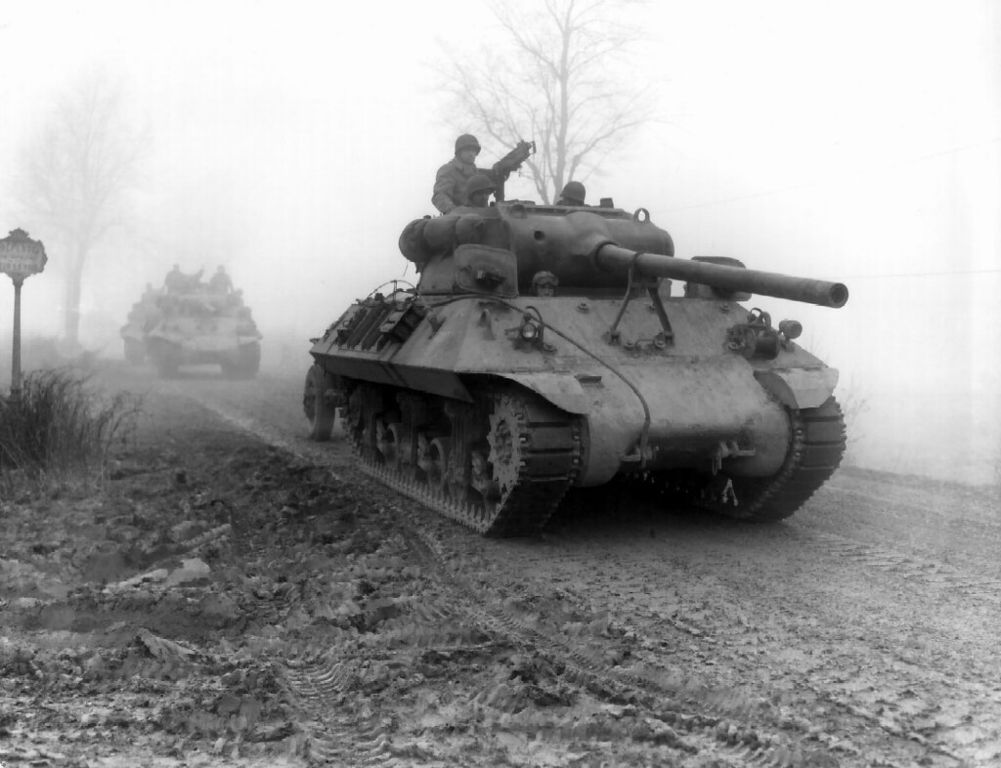
M36 GMC december 1944, en route for the battle of the BulgeAt the battle of the bulge, the 7th AD engaged its M36s at St Vith with success, despite due to artillery shelling and wood splinters, or snipers in these woody areas. M18 Hellcats (such as those of the 705th TD Bat.) also did wonders and all combined American TDs did destroyed 306 German tanks during this campaign. It should be noted there were still numerous towed battalions at that time, which accused the highest losses. The roof vulnerability of the M36 did in fact much to rush out the arrival of the M26 Pershing, similarly armed. In addition specialized semi-independent TD battalions ceased to be used and the M36s (the TD doctrine has been discredited meanwhile) were now operated within mechanized groups, fighting alongside infantry.
Indeed at the time of the attack of the Siegfried lines, the M36 learned to deal in close proximity of the troops and proved quite useful with HE shells against German bunkers. A postwar study alleged that at that time the 39 TDs battalions knocked out until the end of the war no less than 1,344 German tanks and assault tanks, while the best battalion claimed 105 Germans tanks and TDs. The average kills count per battalion was 34 enemy tanks/AGs, but also 17 pillboxes, 16 MG nests, and 24 vehicles. At the same time M36s and M18s arrived in force in Europe, M10 were gradually reassigned to less sensitive sectors and sent in the pacific (1st use Kwajalein Feb. 1944 for the M10). No less than seven TD bats. indeed operated there with M10s and M18s, but no M36s. Some however did manage their way into Asia through French use (first Free Forces, then after the war with more US supplied in Indochina).
Postwar operators
The M36 main gun was still a match for the first modern MBTs. However, as most US ww2 tanks, it was used in the Korean War and proved well capable to destroy the T-34/85s fielded by the North Koreans. They where judged in general as more fast and agile than M48A3 but still much better armed than lighter tanks like the M24 and some years after the M41. The hull ball-mounted machine gun on the co-driver’s side (to deal with waves of infantry not answered properly by the roof heavy cal.50) was a postwar addition to all surviving M36s, and later a M3A1 90 mm (shared by the M46 patton) was mounted instead of the 90 mm M3, which can be recognized to its muzzle brake and bore evacuator. M36s were prioritized for the Military Assistance Program transfer towards South Korea over the more modern M26/M46s similarly armed. 110 M36s along with a few M10 TDs were so transferred to the South Korean Army, which served until 1959. Many also found their way into other armies, although in limited numbers.
In Asia, after South Korea, the Republic of China Army acquired just 8 ex-French M36s in 1955, stationed in Kinmen Island until April 2001 when two were still registered for training in Lieyu. Also The French acquired some postwar which were found in action in the 1st Indo-China war. Indeed, against the threat of a possible Chinese intervention and use of the IS-2 heavy tank, a Panther was first tested without success, and M36B2s were sent instead with the RBCEO and custom modifications (roof plates and additional .30 cal) in 1951. As the threat never materialized, these were used for infantry support until 1956.
Italy also received some postwar, deactivated in the 1960s. Another European operator was Yugoslavia (postwar). By the 1970s these were modernized with a T-55 Soviet-made 500 hp diesel. After the partition of the country existing M36s were passed onto successor states and saw heavy actions in particular in the Croatian War of Independence (1991–1995, withdrawn in 1995) but also by the Serbian forces in Bosnia, Croatia, and Kosovo War as decoys for NATO air strikes.
M36s were also purchased after the partition of India, seeing action on both sides in the Indo-Pakistani War of 1965. The Indian 25th and 11th cavalry units used these as mediums due to their firepower. However the Indians claimed 12 Pakistani M236B2s in the battle of Asal Uttar alone, and the remainder were decommissioned before the battle of 1971.
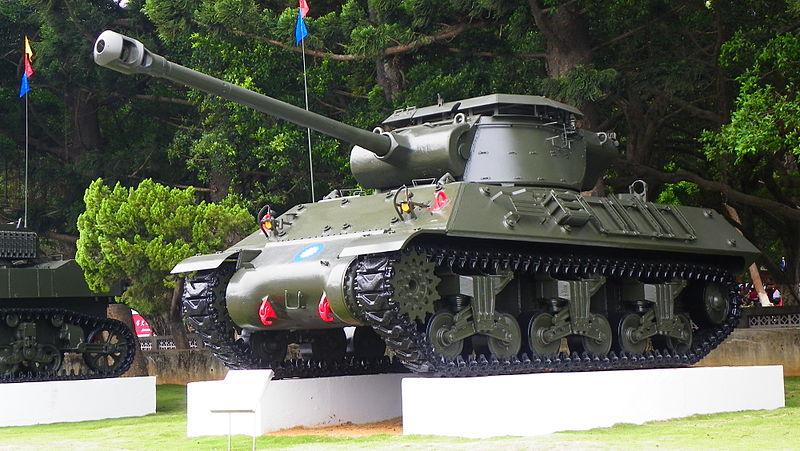
ROCA (Republic of China Army) M36 on dispkay at the Chengkungling museum.
Iran was also provided M36s before the revolution of 1979, and saw action in the Iran-Iraq war. The Iraqis managed to capture a few M36s and M36B1s which also were deployed in the 1991 gulf war. Other operators included the Philippine Army (until the 1960s) and Turkey (222 donated, now long deactivated). Many surviving vehicles were maintained in running conditions and some found their ways into museums and private collections around the world.
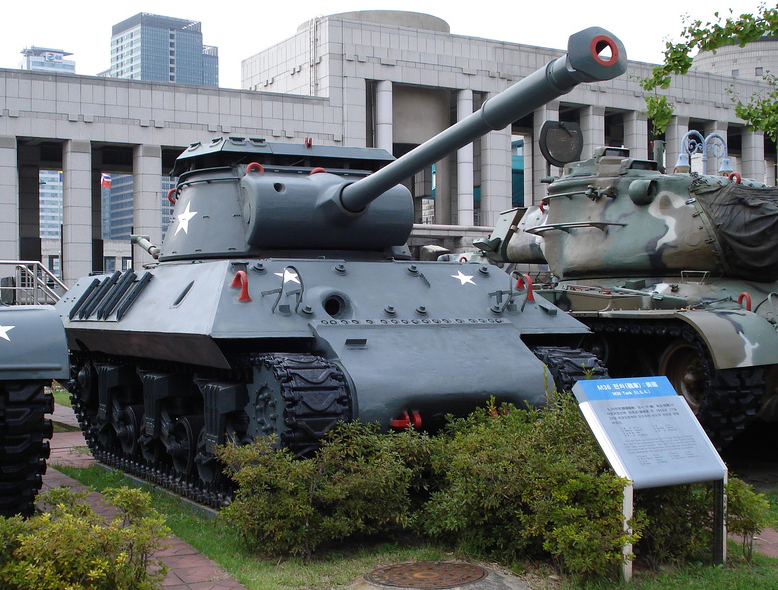
South Korean M36B2 or modernized M36, South Korean Army (Seoul Museum, Flickr)
Links
The M36 on wikipedia
tankdestroyer.net
US Tanks destroyers in Combat – armor at war series – Steven J. Zaloga
M36 specifications |
|
| Dimensions | 5.97/7.46 oa x3.05 x3.28 m (19.7/24.6 x10 x10.9 ft) |
| Total weight, battle ready | 29 tonnes |
| Crew | 4 (driver, Cdr, gunner, loader) |
| Propulsion | Ford GAA V-8 gas. 450 hp 15.5 hp/t |
| Suspension | VVSS |
| Speed (road) | 48 km/h (30 mph) |
| Range | 240 km (150 mi) on flat |
| Armament | 90 mm (47 rds), cal.50 AA (1000 rds) |
| Armor | 8 mm to 108 mm front (0.35-0.35 in) |
| Total production | 1772 in 1945 |
Rare restored footage: TD Boot Cam color 1943
Gallery
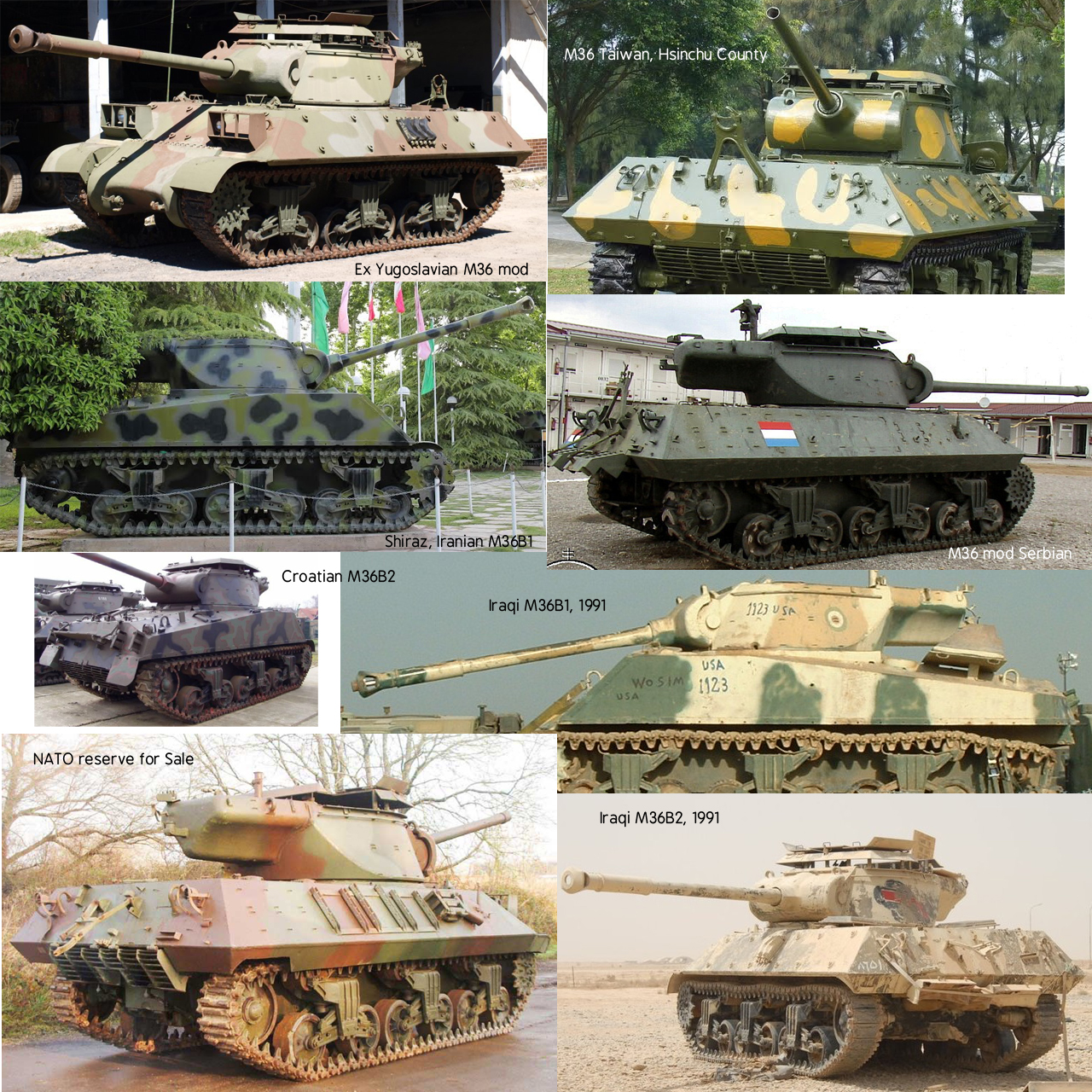
Cold war M36s – various references from the web
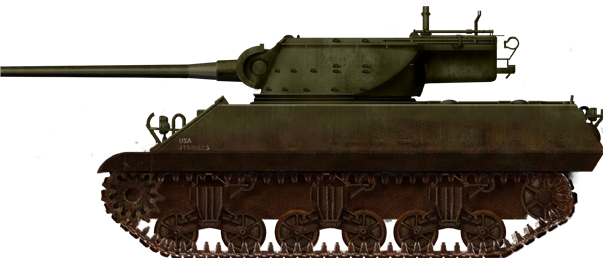
M36 Jackson, early type in trials in UK, summer 1944. Notice the muzzle-less gun and absent add-on side armour plates
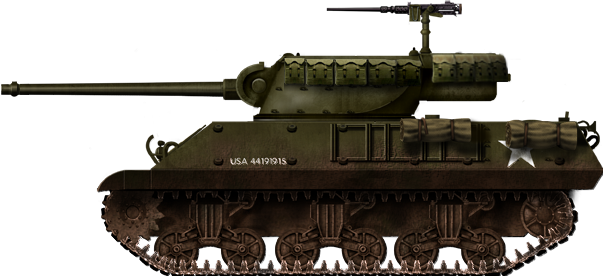
Regular M36 Jackson in Belgium, December 1944.
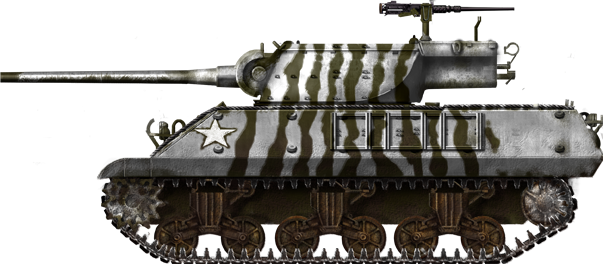
M36 Tanks Destroyer camouflaged in a winter livery, west bank of the Rhine, January 1945.
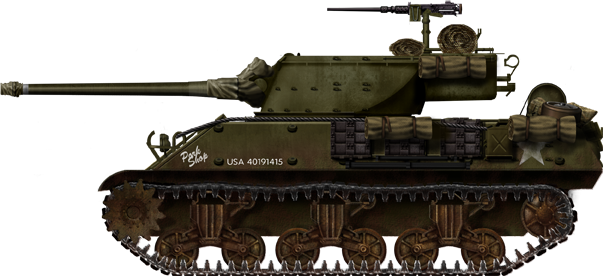
Mid-production “Pork Shop” U.S. Army, 2nd cav., third Army Germany, March 1945.
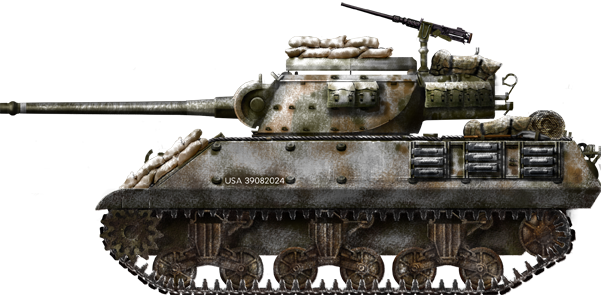
Late Gun motor Carriage M36, Belgium December 1944.
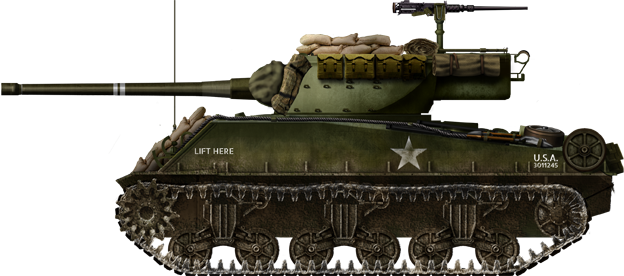
M36B1 in Germany March-April 1945.
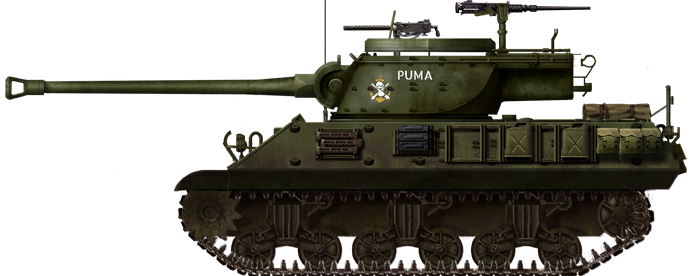
French M36B2 “Puma” of the Régiment Blindé Colonial d’Extrême Orient, Tonkin 1951. Notice the extra cal.30.
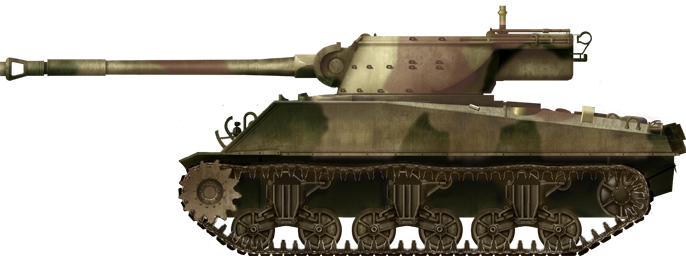
Iraqi M36B1 (ex. Iranian), 1991 gulf war
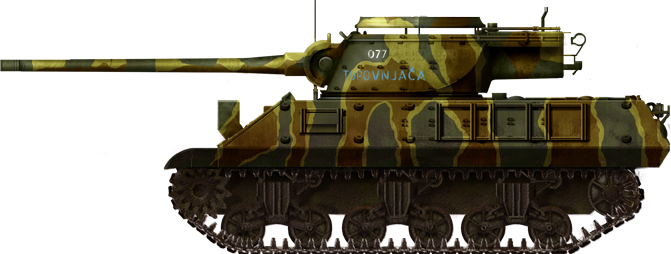
Croatian M36 077 “Topovnjaca”, war of independence, Dubrovnik brigade, 1993.

WW2 Tanks




























WW2 tanks posters

All Tiger tanks liveries.

Panther liveries and variants

WW2 Armour - All tanks











Tanks aces and single tanks series

Find more there

Museums, Movies, Books & Games
The Tanks and Armor in pop culture
Tanks and armored vehicles in general are only really grasped when seen first person: The mass, the scale, it's all there. Explore also the way tanks were covered in the movie industry, in books and in video games.Movies:
Best tanks movie on warhistoryonline.com
On imdb.com
On bestsimilar.com/
miltours.com
liveabout.com/
watchmojo.com
Video Games:
pcgamesn.com
historyhit.com
levvvel.com
vg247.com/best-tank-games
mmobomb.com/
alienwarearena.com


